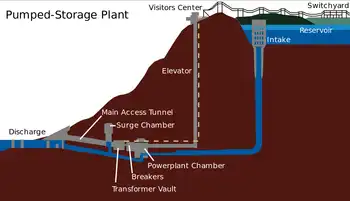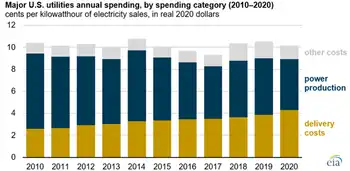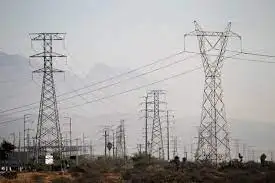Producing power requires energy
ONTARIO - When it comes to electricity, it takes energy to make energy.
Unlike ready-to-burn coal or gas, electricity has to be derived from other forms of energy.
Most of the power generated in Ontario comes from conventional technology, which produces electricity by spinning conducting coils through a magnetic field. It takes a lot of spinning to light up a province.
Traditionally, there have been two sources for that energy: Falling water, or hydroelectric power and steam, or thermal generation.
Hydro:
Best bet is to find a big cliff with a big river flowing over it – like Niagara Falls. Divert some of the water through a tunnel or sluiceway so it spins a turbine that cranks the generator. Downside: The best hydro sites in Ontario have already been developed.
Second choice: Dam a river, and channel the outflow through a generating station. Damming often arouses public opposition because it's associated with environmental problems such as flooding, and interfering with fish. Opportunities in Ontario are also limited, although a big new development on the Mattagami River in Northern Ontario is about to be launched.
Thermal:
This one sounds simple. Boil water and use the steam to drive the generator. This is how Ontario gets most of its power.
The obvious question: How do you boil a lot of water? Ontario has two main methods: burning coal, and using nuclear reactions.
Coal: The province's coal-burning plants make up 18 per cent of the province's generating capacity. But the Liberal government has promised to close them by 2014.
Nuclear: Splitting uranium atoms inside a reactor core releases heat, which is turned into steam and used to drive the electricity generators.
Nuclear plants are very expensive to build, and have a history in Ontario of going far over budget.
Their advantage is low operating costs, although critics argue that the still-unknown cost storing nuclear waste for centuries hasn't been accounted for, nor have lengthy lay-ups of some of Ontario's older reactors.
Ontario's nuclear plants are all aging. The oldest, at Pickering, has at most a decade of life left and is not considered a candidate for a major overhaul to extend its life.
Darlington, the largest, is scheduled to under go a major overhaul starting in 2016 at a cost of $6 to $10 billion. That means over its lifetime, the plant will produce electricity at about 8 cents a kilowatt hour.
Natural gas-fired generation:
These work much like jet engines, spinning turbine generators with jets of burning natural gas. "Combined cycle" natural gas plants, or combined heat and power plants, recapture the heat vented from the generator and use it to make steam. That can be used to generate more power, or to supply heating to local homes or industries. Gas plants are relatively simple to build, but increasingly are meeting with opposition from local residents. Natural gas prices are volatile.
Renewable sources:
Wind: Wind turbines are expensive to build but the fuel is free. They operate only when the wind blows, which means planners have to offset them with other kinds of generation – such as natural gas-fired generators – that can be adjusted quickly to offset the ebbs and flows from the windmills. Some people think they're unsightly there's growing opposition to large-scale wind farms.
Solar: One of the few forms of generation that doesn't spin a generator. Solar panels convert sunlight to electric energy. Expensive to erect, and they take up a lot of space.
Bio-gas: Collects gas from composted manure or plant material to use as fuel in place of natural gas. Gas emitted by decomposing garbage in landfills can also be used.
Imported power:
Some experts argue that Ontario doesn't have to grow all its own power.
Jan Carr – a former chief executive of the Ontario Power Authority – has recently renewed the call for increased electricity trade within Canada. At the moment, there's relatively little trade because electricity systems were developed along provincial lines, and remain a provincial jurisdiction.
Carr argues that breaking down artificial regulatory barriers that now keep power from flowing east and west, and building new transmission lines, would allow Ontario to tap into still-undeveloped hydro-electric sites in Labrador on the lower Churchill River. It would produce other benefits, such as allowing the steady flow of Quebec hydroelectric production to provide back-up for the intermittent production from Alberta's extensive wind farms.
Conservation:
The cheapest power is often the power you don't use. If the demand for electricity can be blunted or reduced, fewer generating units will be needed.
Local hydro utilities have been assigned the task of driving conservation programs, but they're not free.
Some utilities have paid householders to install switches on their air conditioning units that the utility can switch off for short periods when demand is high.
Other programs, aimed at industry, pay big power users a fee, in return for which the utility has the right to reduce their power during specified periods.
Conservation programs, aided by the recession, have put Ontario's power consumption on a downward trend since 2005.
Many conservation programs are aimed at spreading out power usage rather than reducing the total amount of energy consumed. By reducing peak demand, there's less need to build expensive generators that run only a few hours a day, or a few months of the year.
Related News

Hydroelectricity Under Pumped Storage Capacity
PARIS - The expense of hydroelectricity is moderately low, making it a serious wellspring of sustainable power. The hydro station burns-through no water, dissimilar to coal or gas plants. The commonplace expense of power from a hydro station bigger than 10 megawatts is 3 to 5 US pennies for every kilowatt hour. With a dam and supply it is likewise an adaptable wellspring of power, since the sum delivered by the station can be shifted up or down quickly (as meager as a couple of moments) to adjust to changing energy requests.
When a hydroelectric complex is developed, the task creates…




